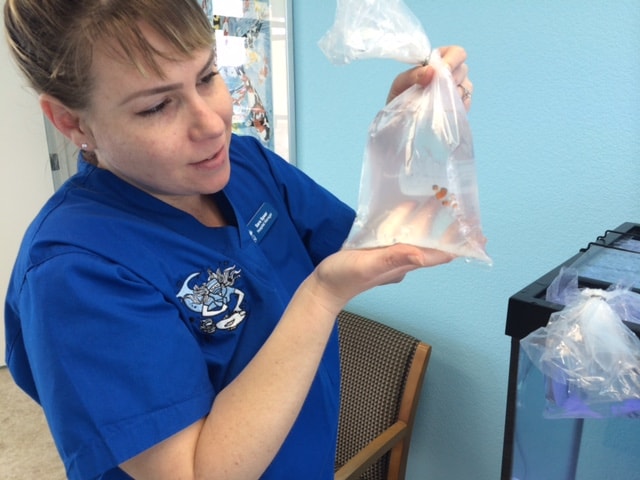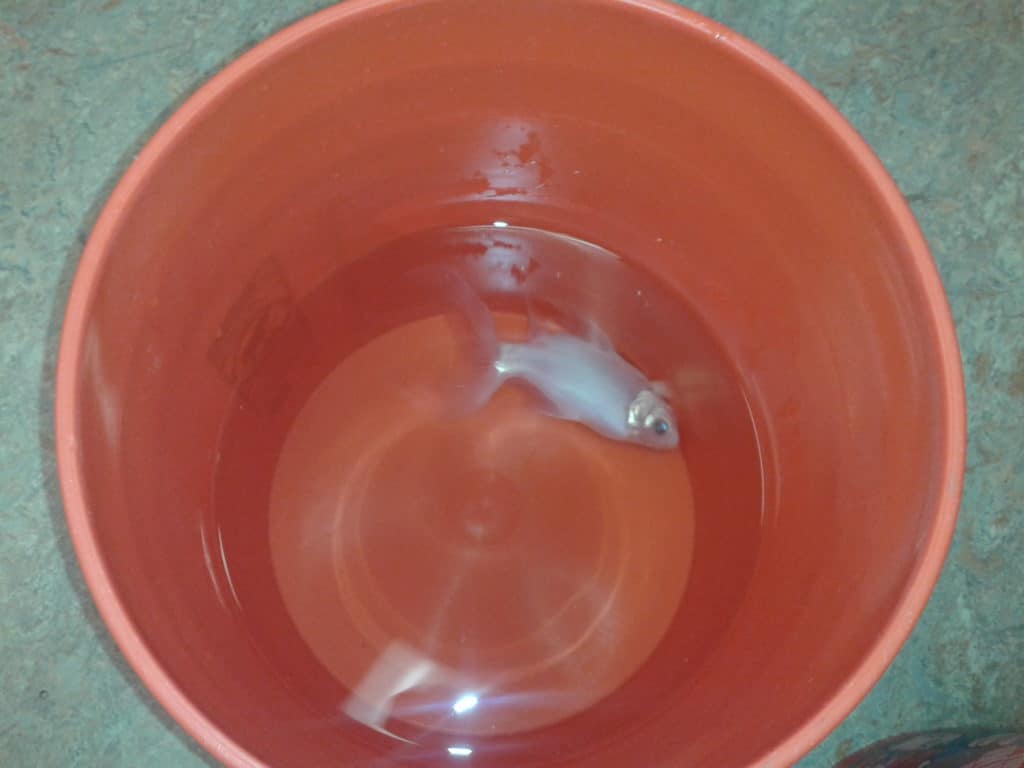If the occasion comes that you need to move your fish more than a room away, there are many safety issues you need to consider before you transport fish. We will discuss the many important factors about how to transport fish, regardless of their size.
Most important: your desired destination MUST be ready for your fish! Don’t move the fish and then get things ready for them. Physically moving fish must be the absolutely LAST step. And yes, their new home should be 100% full of water that has been treated.
When driving with fish on board, speed does not matter as much as acceleration. Maximum acceleration (change in speed over short period of time) will create the most turbulence in your fish transport device. You can drive at highway speeds with fish on board, just take your time getting up to speed and stop slowly over a long distance.

How to Transport Fish <8″
For smaller fish, a 5-gallon bucket with a lid is the best transport option. Drill a hole in the lid to allow an airline to connect to an airstone in the bucket. An air pump can be run off a car adapter or use a battery-powered one.
It is recommended to bring extra treated water, either in another bucket or a sealed bag. If you are traveling more than 1 hour, be sure to do a small water change (no more than 25%) every hour or two.
Keep your bucket out of the sun and away from the radio. Limit the radio volume to prevent stress on the lateral line. On the floor in the backseat is the best option.
How to Transport Fish 8″ and up
Larger fish or multiple small fish should be packed in fish-safe plastic bags. Use double layers, closed individually with thick rubber bands. 2/3 to no more than 1/2 of the bag should be air, with the rest water. If you have access to pure oxygen, use that to top off your bag. It will allow your fish to travel further without adding additional oxygen.
You can also use a large cooler if you have one big enough to fit your fish with at least 6″ all the way around. As with any container for fish, bigger = better. More water = more oxygen and lower ammonia concentration. Run an airline to provide oxygen while underway.
Large fish must be oriented with their head and tail pointing towards the sides of your vehicle. This way, if you have to hit the brakes, they will not smash their faces.
Quick Tips to Transport Fish
Drive like your grandma. Don’t drive like my grandma. Drive like you’re driving your grandma to church with a bowl of chili on her lap in her best dress.
No matter what size fish you are transporting, check in on them regularly. Make sure their water temp is not changing too quickly, they are not listing and still breathing. Some fish owners like to utilize a GoPro in with their fish so they can watch on their phone or other device.
If you are not able to bring extra water or an air pump, you can add additional oxygen to your fish’s water by adding 1ml hydrogen peroxide (3%) per gallon for 24 hours of adequate aeration. This is ONLY to be used in an EMERGENCY! Extra water or an airstone are strongly recommended.
When you arrive at your fish’s new home, be sure to acclimate them properly. Never just dump your fish into the tank/pond after a long period of time under transport. While respirating in their bag/bucket, they may have dropped the pH of their water. By tossing them in right away, you may cause a pH shock which causes stress and death. It is critical to match pH and temperature before you put the fish into their new home.


I love how you stress the importance of preparing the new home before moving the fish! It is key to make sure their new tank is fully set up with treated water before the move. Your detailed advice on keeping them safe and minimizing stress during the journey is really helpful. Thanks for sharing these thoughtful and practical tips!
Hi Dr. Jessi, I loved your tips for handling larger fish or a bunch of small ones using double-layered bags and pure oxygen. It’s clear you’ve really thought about both keeping the fish comfortable and making travel easier!